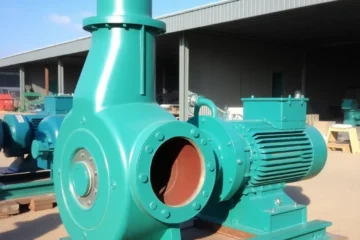TIG (Tungsten Inert Gas) welding, or Gas Tungsten Arc Welding (GTAW), is a precise welding process that uses a non-consumable tungsten electrode to generate an arc. This arc melts the base metal, while an inert gas, typically argon, shields the weld from contamination. TIG welding is valued for its clean, high-quality welds, making it ideal for thin metals, aerospace, automotive, and intricate fabrication work.
Types of TIG welding
TIG welding, or Tungsten Inert Gas welding, is a precise welding process that uses a non-consumable tungsten electrode to produce the weld. There are several types of TIG welding techniques, each suited for specific applications and materials.
- Manual TIG Welding: This is the most common form, where the welder manually controls the torch and filler material. It offers excellent control over the weld, making it ideal for detailed and delicate work.
- Automatic TIG Welding: In this method, the welding process is automated using machines. The torch movement, arc control, and filler material feeding are all automated, ensuring consistent and high-quality welds, particularly useful in mass production.
- Pulsed TIG Welding: Pulsed TIG welding alternates between high and low current levels. The high current allows penetration, while the low current reduces heat input. This technique helps in controlling distortion and is suitable for thin materials.
- Hot Wire TIG Welding: This variant introduces a filler wire that is electrically heated before it enters the weld pool. Preheating the wire increases deposition rates and improves efficiency, making it suitable for thicker sections.
- Orbital TIG Welding: This is a fully mechanized process where the welding torch rotates around the workpiece, commonly used for pipes and tubes. It ensures uniform welds and is widely used in industries requiring high-quality, repeatable welds.
Some formulas related with TIG welding.
Here are 5 important formulas related to TIG welding:
- Heat Input Formula:
Where:
- = Voltage (Volts)
- = Current (Amps)
- = Welding Speed (mm/min)
- Efficiency (For TIG: approx. 0.6 – 0.8)
- Arc Length Formula:
Arc Length Constant depends on the type of shielding gas and electrode used.
- Deposition Rate Formula:
Where:
- = Current (Amps)
- Efficiency Factor depends on the process (usually lower for TIG due to manual control).
- Travel Speed Formula:
- Welding Power Formula:
Where:
- = Voltage (Volts)
- = Current (Amps)
These formulas help in calculating the essential parameters for TIG welding, like heat input, power, and deposition rate, ensuring control over weld quality.
Parts of TIG welding.
Following are the some parts of TIG welding.
- TIG Torch: Holds the non-consumable tungsten electrode and directs the arc.
- Tungsten Electrode: Creates the arc that melts the base metal; does not melt itself.
- Ceramic Nozzle: Directs shielding gas over the weld area to protect it from contaminants.
- Collet & Collet Body: Hold the tungsten electrode firmly in place within the torch.
- Power Source: Supplies constant current (AC or DC) needed for welding.
- Filler Rod: Added manually to the weld pool when extra material is required.
- Ground Clamp: Completes the electrical circuit between the power source and the workpiece.
- Foot Pedal / Hand Control: Allows the welder to control and adjust the current output during welding.
- Gas Cylinder: Contains shielding gas, usually argon, used to protect the weld area.
- Gas Regulator & Flowmeter: Control and measure the flow rate of shielding gas to the torch.
These parts work together to ensure clean, precise, and high-quality welds in TIG welding.
Safety precautions should be taken for TIG welding
Following are the tips for safety precautions for TIG welding.
- Always wear a welding helmet with an appropriate shade to protect eyes from UV and IR rays.
- Use heat-resistant gloves, flame-retardant jackets, and safety shoes to prevent burns and injuries.
- Ensure proper ventilation to avoid inhaling harmful fumes and gases.
- Keep flammable materials away from the welding area to reduce fire hazards.
- Inspect cables, connections, and electrode holders regularly for damage.
- Secure and handle gas cylinders carefully; check for leaks before use.
- Properly ground the welding machine and workpiece to prevent electric shock.
- Avoid direct contact with hot metal parts and electrodes.
- Use welding screens to protect others nearby from arc radiation.
- Be trained in TIG welding techniques and emergency procedures.
Advantages and disadvantages of TIG welding.
Advantages of TIG Welding:
- High-Quality Welds: TIG (Tungsten Inert Gas) welding produces clean, strong, and precise welds with excellent finish. It minimizes spatter and requires minimal post-weld cleanup.
- Versatility: TIG welding is suitable for a wide range of metals, including steel, stainless steel, aluminum, magnesium, copper, and exotic metals.
- Control: The welder has precise control over the heat input and filler material, allowing for accurate and aesthetically pleasing welds, especially useful in thin materials.
- No Flux Required: Since it uses inert gas (usually argon or helium) for shielding, there’s no need for flux, reducing the risk of slag inclusion.
- Welds in All Positions: TIG welding can be used in various positions (flat, vertical, overhead) with good results.
Disadvantages of TIG Welding:
- Slower Process: TIG welding is slower compared to other welding methods like MIG or Stick welding. It requires more time and skill to produce a weld.
- Requires High Skill Level: TIG welding demands a high level of manual dexterity and experience. The welder must control the torch, filler rod, and foot pedal simultaneously.
- Expensive Equipment: The setup cost for TIG welding machines is generally higher due to the need for high-quality power sources, inert gas supply, and consumables.
- Limited Outdoor Use: Wind can disperse the shielding gas, making TIG welding less suitable for outdoor environments without protective measures.
- Lower Deposition Rate: TIG welding has a lower filler material deposition rate, which affects productivity, especially in thicker materials.
Would you like me to format it as a table or bullet points for easier reading?



0 Comments